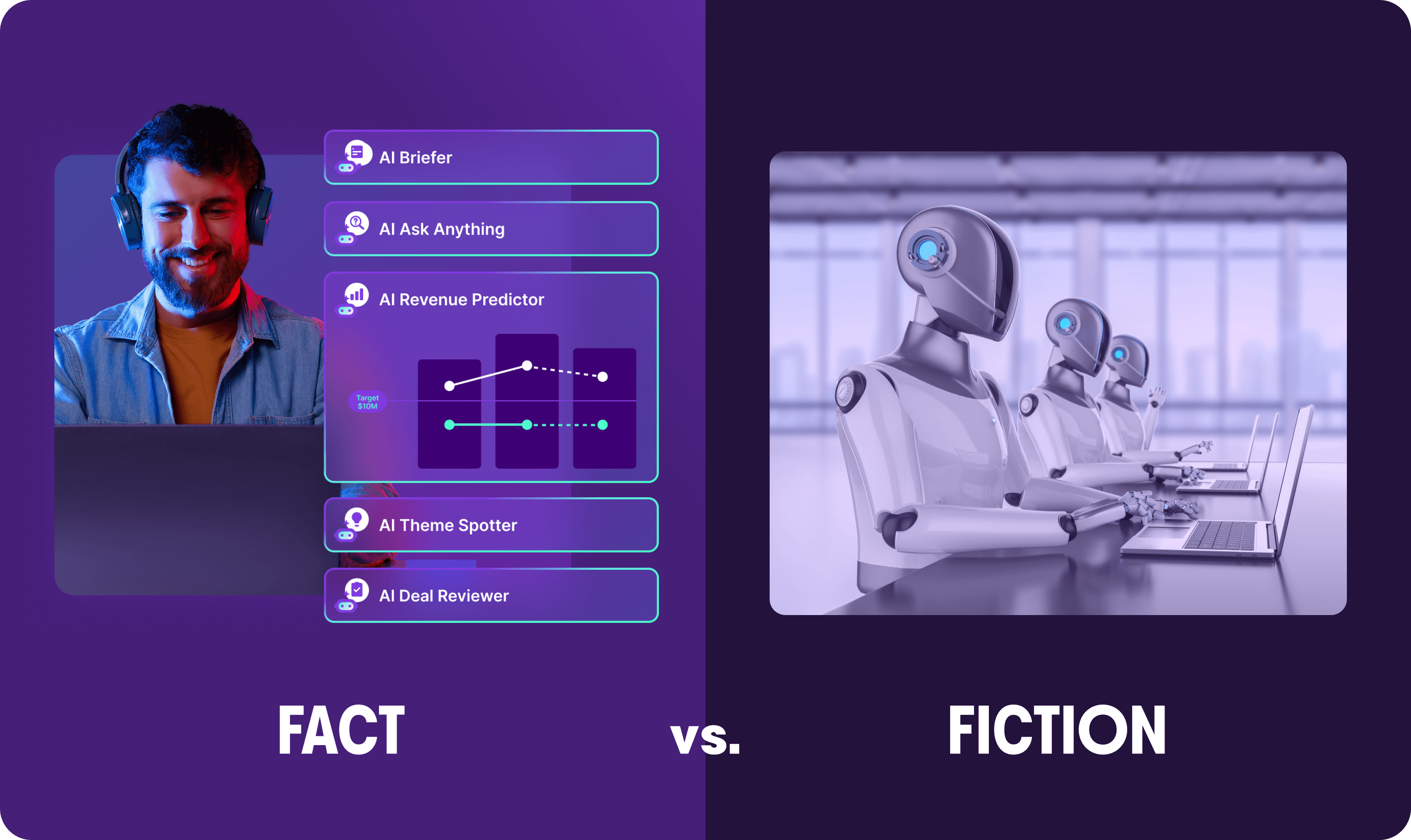Sales strategies
Understanding sales pipeline stages: a comprehensive breakdown

Jonathan Costet
Content Author
Published on: November 16, 2022
Visibility is everything in sales. If you can’t see where each deal is in your sales process and how long it’s been there, you’ll struggle to improve it.
That’s why building and managing a sales pipeline is so important.
A well-defined sales pipeline makes your sales process transparent, allowing you to see your deals in the sales funnel, where they’re getting stuck, and how long the entire process takes. It also makes it much easier for you, as a sales manager, to forecast revenue.
In this article, we’ll outline what a sales pipeline is and why it’s important, the six typical stages of a sales pipeline, and how you can improve your own pipeline.
What is a sales pipeline?
A sales pipeline is a visual representation of where deals are in your sales process . It is split into several sales stages — typically six or more — that represent the steps every sales rep should take before they close a deal.
A sales pipeline will contain a lot of information, including the total number of deals your sales team is working on, the name of the potential buyer, the value of each deal, and where each deal is in the sales process.
Why is a sales pipeline important?
A sales pipeline makes it easy for anyone to see which stage each of your team’s deals is at. It also makes the sales process more manageable by breaking it down into small, achievable steps.

A sales pipeline also makes it much easier for sales managers to analyze the sales process, identify which stage (if any) most sales get stuck at, and find the most at-risk deals. Finally, sales managers can use their sales pipeline to accurately forecast future sales .
What’s the difference between a sales pipeline and a sales funnel?
It’s important to clear up a common misconception before we go any further. A sales pipeline is not a sales funnel . These terms are sometimes used synonymously, but they’re not the same.
The sales funnel represents the broad journey a buyer takes. The sales pipeline outlines the internal processes of the sales team.
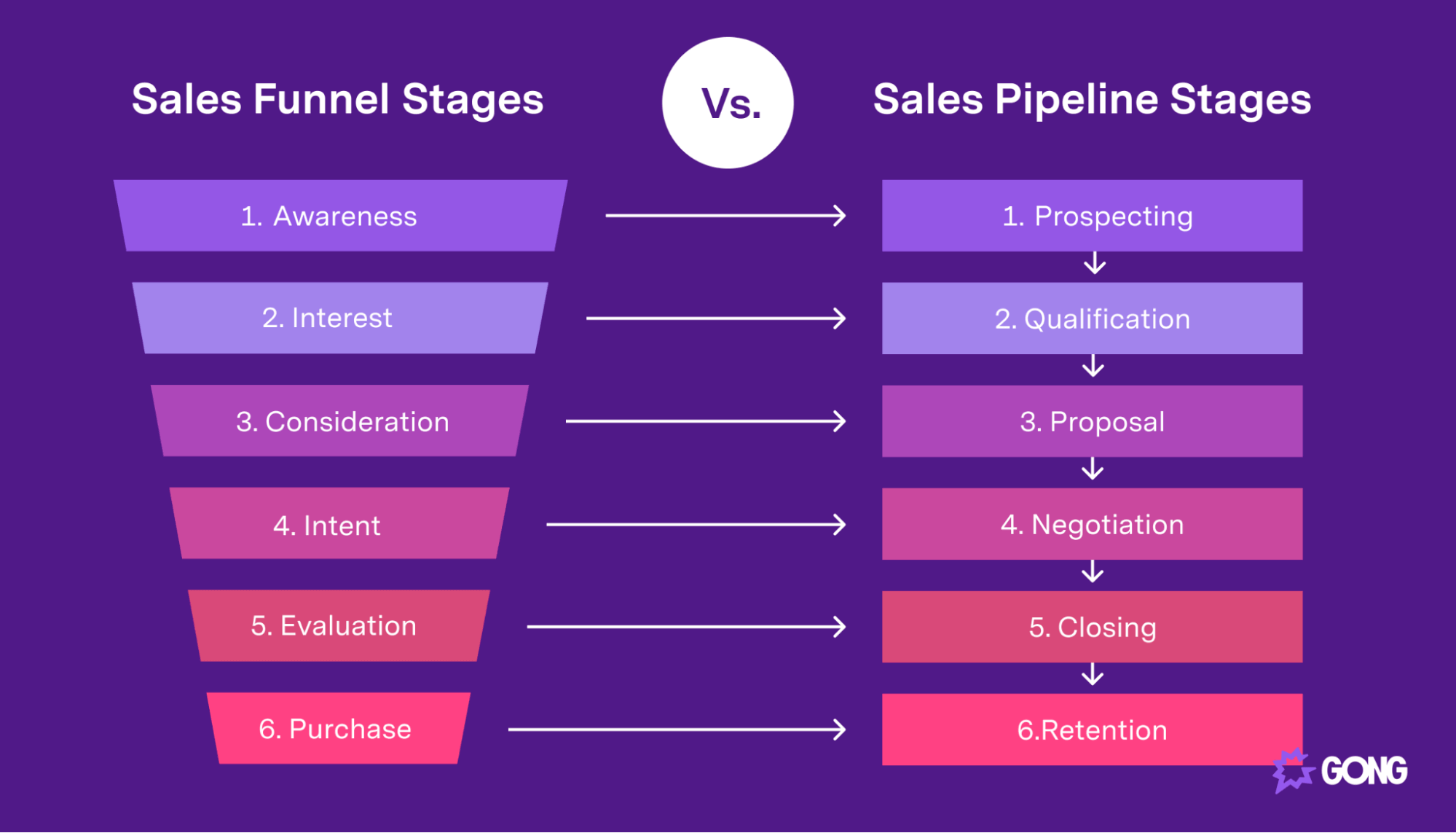
You can see the difference between the sales funnel and sales pipeline stages in the diagram above. Confusion often occurs because each stage of the sales funnel maps reasonably nicely to each stage of the sales pipeline. But just because they map well doesn’t mean they are the same thing.
How to define and build your sales pipeline
A well-defined pipeline is essential to improving your sales process and spotting at-risk deals. Here’s how to define, build, and improve your B2B sales pipeline stages.
1. Prospecting
The first stage of any sales pipeline is to identify potential buyers. Your reps need to source potential sales targets (whether that’s from your marketing team or through their own efforts) and make contact to see if they are viable.
Research skills are critical here.
Even if you’re lucky enough to have a marketing team generating qualified leads for your sales reps, it’s still important they know how to source their own leads and compile their own research. 82% of top-performing reps always research prospects before making contact.
Don’t make the mistake of relying on existing data in your CRM, though. Just because a sales rep spoke to a prospective buyer six months ago doesn’t mean that data is still accurate. In fact, research shows around one-quarter of buyers change jobs every year, and 85% of sales reps have lost or delayed a deal in the past year because of a buyer changing jobs.
Build and improve your sales pipeline by:
Creating an Ideal Customer Profile (ICP), like the one below. The better you know what a great customer looks like, the easier it’ll be to find high-quality leads.
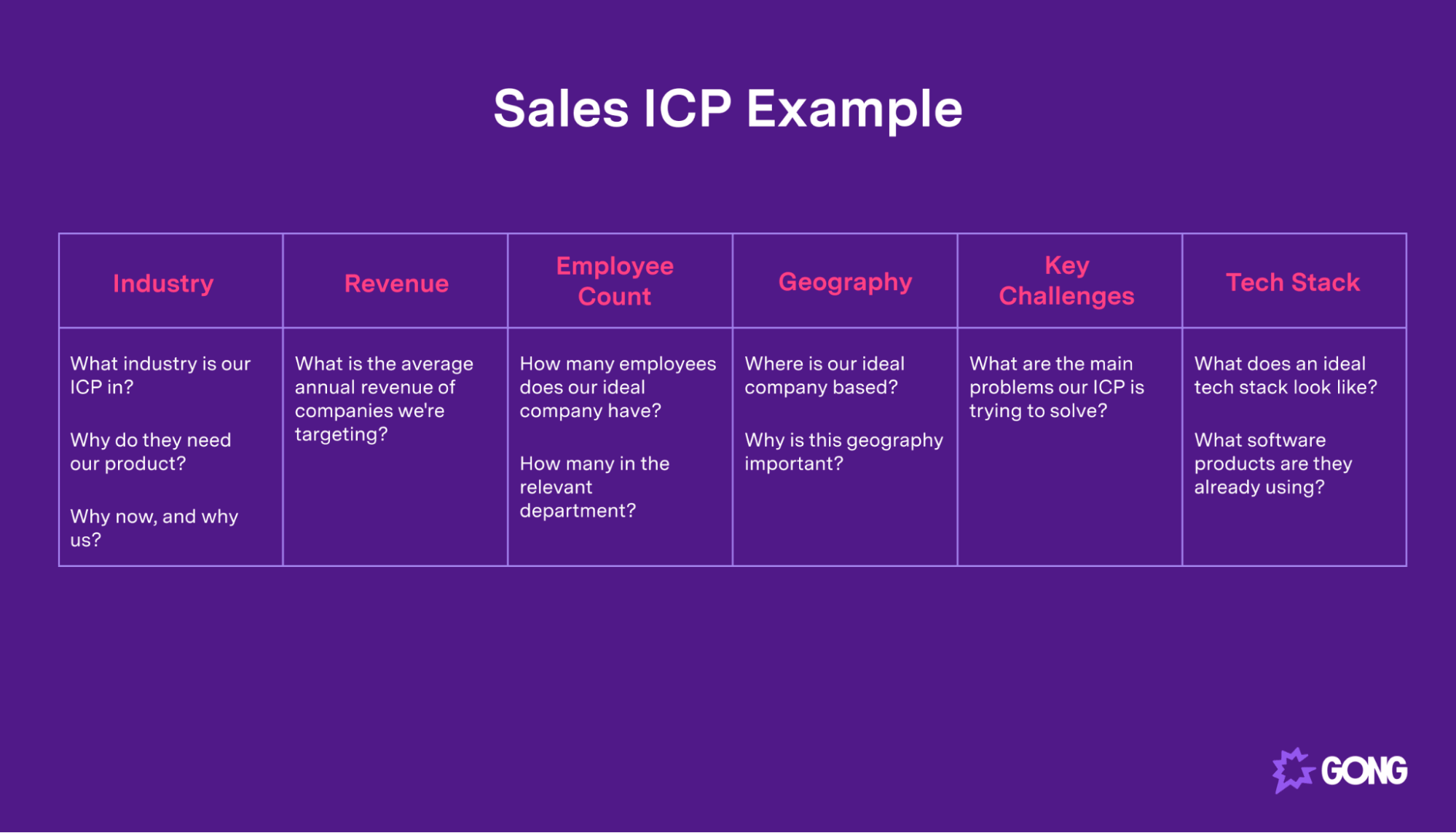
Reps should also use proven sales prospecting techniques , like asking buyers how they have been and stating the reason for their call to book more meetings.
2. Qualification
Once your team has a list of prospective buyers, they need to identify which leads have the propensity to buy as quickly as possible. This is essential to stopping reps from wasting time on prospects who aren’t in the market for your solution.
Reps should also use this stage to start identifying their buyer’s pain points so that they can create a compelling pitch. The qualification stage doesn’t need to happen after one call. It can take several conversations to fully understand a prospect’s position and identify if they really do meet your ICP.
Build and improve your sales pipeline by:
Using the BANT methodology.

This framework developed by IBM helps reps understand whether prospects have the budget, the authority to make a deal, a need for your product, and a timeline to find a solution. If they meet at least three of these criteria, they’re considered qualified and more likely to convert.
Once your sales reps have qualified prospects, encourage them to prioritize the best leads. If you calculate the average length of your team’s sales cycle , you’ll probably find that it takes roughly the same amount of time to close each deal. That means your team is better off focusing on high-value deals that are more likely to convert than getting distracted by smaller deals.
3. Proposal
By now, your reps should have an excellent understanding of your buyer’s pain points and be in a position to marry those problems with your solution. This is the key to creating an irresistible proposal.
You don’t want sales reps giving their pitch to just anyone, however. They need to identify every stakeholder and decision-maker and involve all of them in the process.
This is especially important for large deals. Our research shows a strong correlation between the size of the deal and the number of buyers involved.
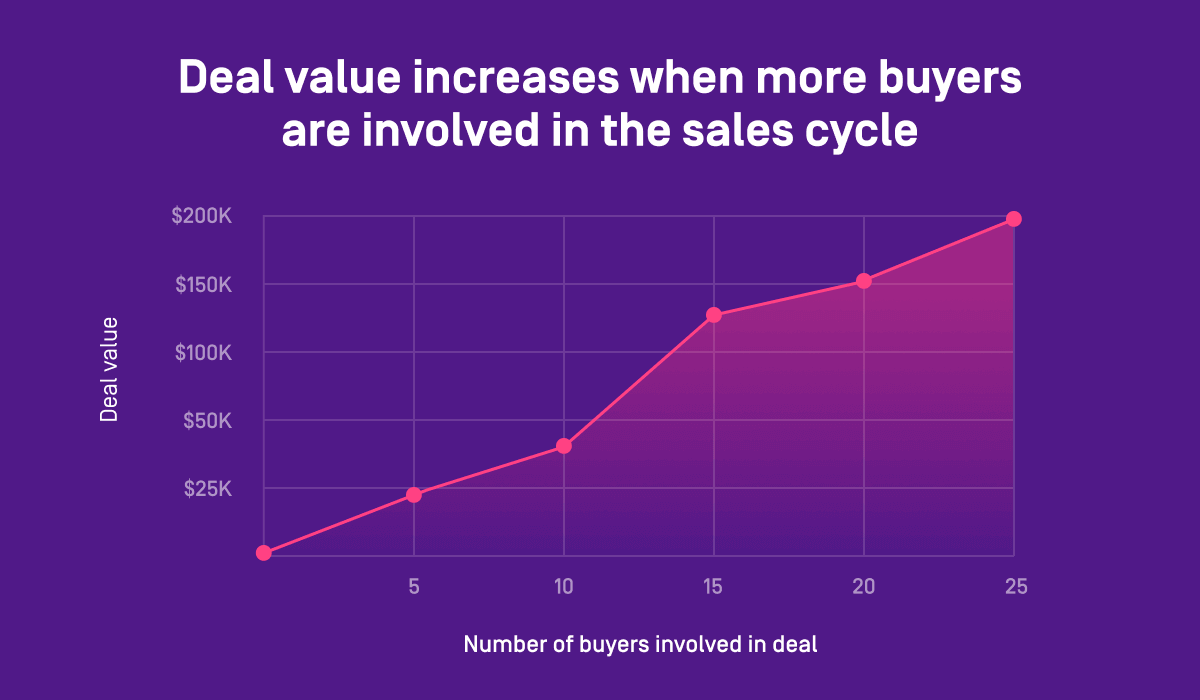
There’s no two ways about it.
Enterprise-level deals involve more people and require your sales reps to pitch to multiple stakeholders. It might be a pain, but it’s a necessity for deals of a certain size.
Build and improve your sales pipeline by:
Teaching your reps how to create a winning sales proposal . These include:
- Making your business case early
- Speaking to the most important stakeholder
- Presenting results
You can also use the sales proposal deck we’ve perfected instead of creating a proposal from scratch.
4. Negotiation
Sales reps won’t close the deal immediately after presenting their proposal. They’ll have to negotiate with multiple stakeholders, answer a raft of questions, and, of course, overcome objections .
Don’t forget, you may not be the only company your buyer is talking to. That means this stage is as much about continuing to help your prospect and sell your solution as it is about negotiating with them.
Build and improve your sales pipeline by:
Making sure the reps are involving all decision-makers in the negotiation phase. The last thing you want is a deal stuck in this stage of the pipeline because a key decision-maker didn’t get CC’d.
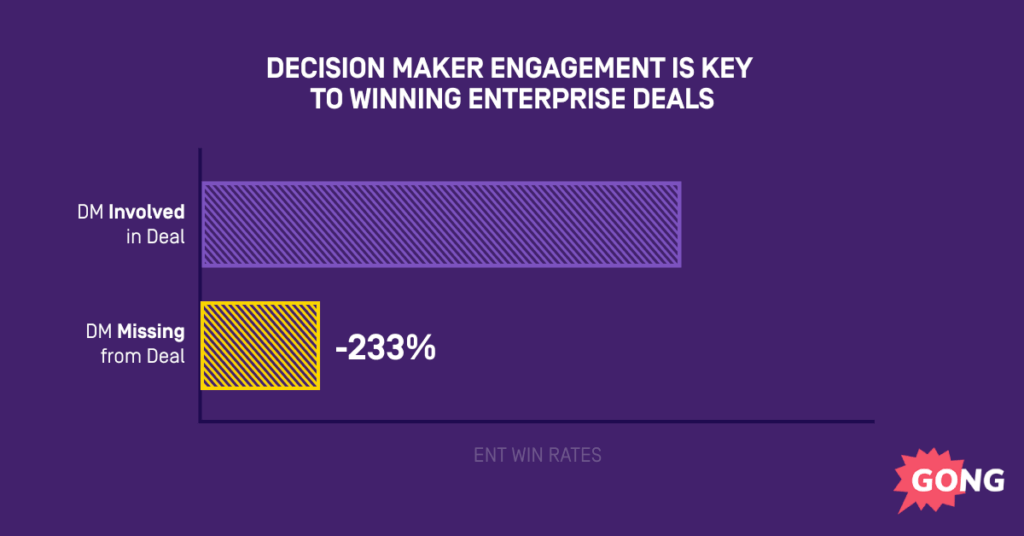
Enterprise deals (classed as those valued in excess of $100,000 with a 90+ sales cycle) are 233% less likely to close when decision-makers aren’t involved.
You should also train your reps to improve at handling objections . Our most commonly recommended tips include:
- Answering objections with questions
- Validating objections before answering them
- Reframing objections
If reps handle objections right, they’ll be able to move prospects onto the penultimate (and most important) pipeline stage.
5. Closing
If your reps have made it this far, this should be the easiest pipeline stage of all. If they’ve handled the buyer’s objections and reinforced the value your product has in solving their sales point, then all they need to do now is ask a few more questions and agree on the terms.
If in doubt, your reps can use their buyer’s actions to identify when a deal is close to closing.
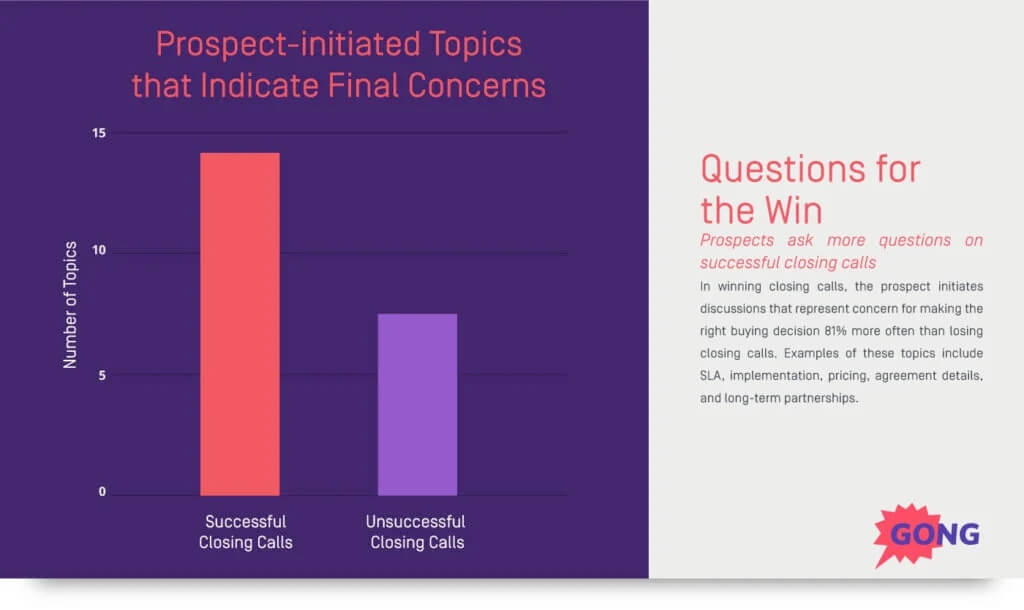
Our research shows that prospects ask more questions when they are about to close.
Build and improve your sales pipeline by:
Teaching your sales reps how to close more sales by asking questions . These questions should include:
- Under what circumstances can we agree on a deal by [date]?
- Do you see a world in which you can move forward by [date]?
- It seems like the urgency around this initiative has slowed. What’s changed?
6. Retention
Work doesn’t end when reps close a deal.
Sales reps have a responsibility to make sure buyers have a positive experience. That means overseeing the onboarding process and checking in with buyers.
Build and improve your sales pipeline by:
Having a great onboarding process . The quicker you can get your buyer to see value in your product, the longer they’ll be a customer. Great onboarding can also:
- Reduce churn
- Increase net dollar retention
- Lower customer support costs
- Boost user engagement
How to improve sales pipeline management
Defining a sales pipeline isn’t enough if you want to stay competitive. Use these sales pipeline management tips to maximize your team’s revenue.
Track KPIs
Your sales pipeline will constantly change. That’s why it’s essential to monitor its health with several key performance indicators.
Track the following metrics at a minimum:
- The number of deals in the pipeline
- The average deal size
- The conversion rate at each stage of the pipeline
- Your average sales cycle length
- The total value of your pipeline
- Your team’s close ratio
Review these metrics on a monthly or weekly basis. It can be helpful to create a pipeline sales report to ensure that you track these metrics and show your team and your bosses the current state of your pipeline regularly.
Keep your pipeline clean and up to date
Your sales pipeline is in a constant state of flux. You need to keep on top of it to keep it from becoming an out-of-date, chaotic mess — the kind that sees deals get lost.
You’ll want to make sure that every deal is in the correct stage of the pipeline and that you remove stagnant deals from the pipeline altogether.
Encourage your reps to keep your CRM up to date and to add notes every time they speak to a buyer. Using sales software to automate the process can be a godsend, but your CRM will only take you so far. Try using sales pipeline management software to further automate the process and get a real-time view of your pipeline whenever you need it.
Review your pipeline regularly
You may be using the most effective sales methodology in the world, but there’s no guarantee that it’s going to work forever. Thus, you need to set aside time regularly to review your pipeline.
What should you look for in particular?
Bottlenecks are the first sign of problems with your sales process. Any stage of the sale pipeline that has a lot of deals in it or a low conversion rate could suggest either a problem with your leads, your sales reps, or your entire sales process.
Regular reviews also make it easier to forecast revenue. If you frequently track how deals are moving through your pipeline, you can be much more confident about the percentage of deals that will close each quarter or period.
Start by running a monthly review at first, then move to a quarterly review if your pipeline seems stable. And don’t worry — you won’t need to create a report from scratch. Get a head start using Gong’s sales pipeline template .
Find at-risk deals with pipeline management software
Almost half of salespeople — 54% more than in 2018 — use sales intelligence tools. These kinds of sales tools are essential for good sales pipeline management, particularly when it comes to identifying at-risk deals.
Gong lets you go beyond your reps’ opinions to see the truth of your pipeline and catch potential issues early on. For instance, it automatically alerts you when a deal has stalled at a particular stage of your pipeline, helps you see if the right decision makers are involved in the deal, and provides actionable advice on how you can increase the chances of closing.
Visualize your sales pipeline with Gong
A well-built and optimized sales pipeline is a fantastic tool to visualize the state of your team’s sales, track deals, and forecast revenue.
Gong lets you take things even further. Gong’s pipeline management software connects with your CRM and other systems to capture every single customer data point. It uses AI to identify at-risk deals, improve your pipeline, and make your forecasts even more accurate.
Book a demo to learn more.

Content Author
Jonathan Costet is the Senior Director of Revenue Marketing at Wiz. Before this, he was Senior Manager, Growth Marketing at Gong, where he played a crucial role in driving demand generation through data-driven strategies. At Gong, Jonathan harnessed the power of revenue intelligence to craft effective messaging, improve customer retention, and optimize sales forecasting. He was instrumental in using Gong's platform to unlock insights that helped target the right buyers and maximize marketing efficiency.
Discover more from Gong
Check out the latest product information, executive insights, and selling tips and tricks, all on the Gong blog.



